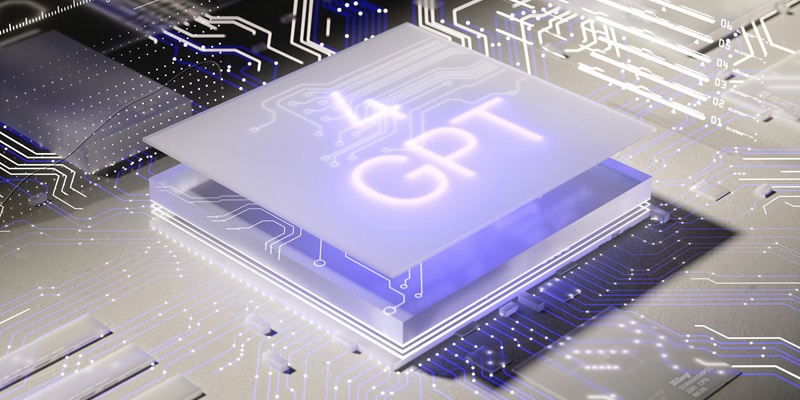The ever-changing landscape of artificial intelligence (AI) has reached a pivotal moment with the introduction of OpenAI’s GPT-4, pushing the boundaries of what it means to be a digital assistant. As the lines between human and machine continue to blur, it’s becoming increasingly clear that while AI can emulate many human traits, there remain ineffable elements of our humanity that technology cannot replicate. The article delves into the transformative role AI is playing and the essential human skills that will shape the workforce of the future.
The Dawn of a New AI Era: GPT-4’s Human-like Capabilities
GPT-4: Beyond Computational Assistance
Marking a stride beyond computation into companionship, GPT-4 comes to life as a stunning evolution of ChatGPT. Suddenly, we’re engaging in conversation with a machine that intuits and reacts with a semblance of emotion, creating an interaction that eerily approximates human contact. This is not just a computational leap; it’s a digital genesis that demands we reconceptualize AI’s role in daily existence, melding it more intimately with our personal and professional lives.
The Human-Like Interaction Conundrum
Imagine a machine that not only understands your words but can also perceive the emotional currents beneath them, even mustering the ability to reflect them back. With GPT-4, this isn’t imaginary—it’s the present. Its ability to interpret context, hold conversations, and inject humor challenges our understanding of machine interaction, shaping an AI landscape that is far more complex and nuanced than ever before.
The AI Reverberation Across Industries
Microsoft’s Copilot and Beyond
AI’s presence is not confined to tech companies like OpenAI, it resonates across diverse sectors. Take Microsoft’s AI Assistant, Copilot, featured in a Super Bowl commercial, as a paragon of AI as an enhancer of human aspiration rather than a usurper. Copilot showcases how AI can blend with human ingenuity in fields as varied as the arts and software development, affirming technology’s role as a force multiplier for creativity.
The Changing Face of Labor
The discourse turns toward the transformative potential of AI on the job market. McKinsey’s estimation that 70% of business activities could be automated by 2030 aligns with OpenAI’s projection of an 80% impact on U.S. jobs. While concerns of mass job displacement persist, the anticipation of an AI-driven job evolution—where roles are reimagined, tasks optimized, and educational access democratized—is a narrative imbued with cautious optimism.
The Immutable Value of Human Ingenuity
Creativity: The Human Touch in AI’s Shadow
The creative realm illustrates the intricate interplay between human minds and machine intelligence. AI, despite its algorithmic prowess, remains an adjunct to the inherently human attributes of imagination and creativity. Our artistry is birthed from intuition, emotion, and individual narrative—traits that are currently beyond AI’s reach, regardless of its programming sophistication.
Strategic and Ethical Leadership: A Human Necessity
AI’s incursion into business necessitates deeper consideration of strategic decision-making and leadership—an area where the pulse of human judgment prevails. It is the grasp of interpersonal nuances, company ethos, and ethical limits that stand steadfast as the core of human oversight. Algorithms have not—and for the foreseeable future, cannot—assume the complex depths of moral discernment and relational dynamics.
Nurturing Uniquely Human Skills in the AI Age
Critical Thinking and Emotional Intelligence
As AI technologies advance, so must we, emphasizing the development of uniquely human capabilities such as critical thinking, emotional intelligence, and the resolve to tackle complex challenges. These aspects of our intellect and character serve as the essential counterpart to AI, anchoring the essence of humanity that technology aspires to but cannot ultimately embody.
Learning and Adaptability: The Keys to Coexistence
In an era where technological advancements redefine the job landscape, a high value is placed on lifelong learning and adaptability. The ascent of AI invites us to merge our insights with its precision, fostering a synergy that enhances creative problem-solving. This is a call to actively shape the integration of human skill with artificial acumen, rather than merely observing the process.
The Future of Human-AI Synergy
The Co-evolution of AI Tools and Human Workforce
The horizon glimmers with the promise of a collaborative future, one where AI and the human workforce evolve together. This envisioned symbiosis is not about contention but about harmony, where AI acts as a catalyst to amplify the breadth and depth of human potential. It’s a hopeful outlook that perceives technology as an ally in progress, emphasizing our human strengths rather than negating them.
Embracing a Hybrid Model of Work
With the unveiling of OpenAI’s GPT-4, we’re bearing witness to a significant phase in the maturation of artificial intelligence, compelling us to rethink the essence of digital aids. The distinction between human and technological capabilities grows finer each day, yet AI, regardless of its capacity to mirror many human characteristics, lacks the essential essence that defines us. This piece examines AI’s burgeoning influence and the irreplaceable human skills that are essential for the future workforce.
AI’s latest advancements, particularly with GPT-4, signify a transformative chapter for digital assistants—machines that hover on the brink of what was traditionally deemed an exclusively human domain. As AI imitates our attributes with increasing precision, there are still facets of human nature that remain elusive to digital embodiment. The dialogue pivots on AI’s expanding role, reinforcing that certain human abilities will steadfastly remain central to the dynamics of future work.

